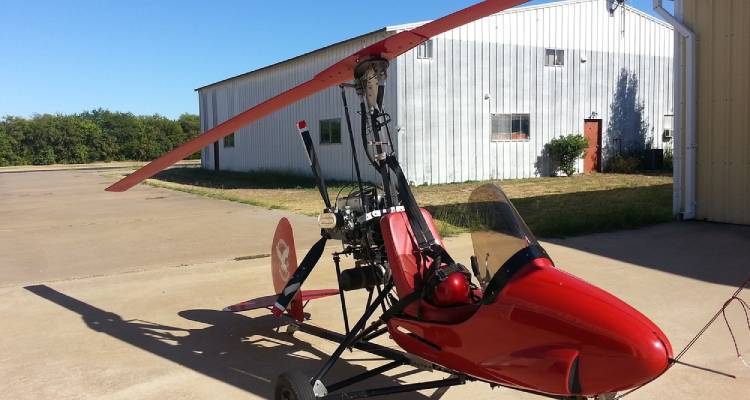
From Cierva to Modern Times: The Evolution of Autogyros
The Evolution of Autogyros: A Historical Overview
From the Wright brothers' first powered flight in 1903 to the advent of supersonic jets, the history of aviation is a story of constant innovation. Among these innovative developments, one of the most distinctive and intriguing is the autogyro. Also known as gyroplanes or gyrocopters, autogyros hold a unique place in the history of flight. This article explores the journey of autogyros through time, from their early beginnings to their role in modern aviation.
The Birth of the Autogyro: Juan de la Cierva
The autogyro was invented by , a Spanish engineer, in the early 1920s. Cierva's motivation came from a desire to create an aircraft that could fly safely at low speeds and was less likely to stall. In 1923, his first successful model, the C.4, made its maiden flight. It was a revolutionary moment in aviation history, heralding the era of rotary-wing flight.
Autogyros in the Early 20th Century: Pioneers and Innovations
During the 1920s and 1930s, the popularity of autogyros spread worldwide, with various companies and inventors producing their versions of Cierva's original design. In the UK, the Avro Company created the , while in the US, the developed models that even featured in early Hollywood films.
Autogyros During War and Peace
Autogyros played a significant role in World War II. They were used for various purposes such as reconnaissance and calibration of anti-aircraft guns. Post-war, they found applications in agriculture and were used for crop spraying and livestock control.
The Autogyro Today: A Modern Leisure Aircraft
Today, autogyros are mostly used for leisure and sport flying. Modern versions are characterised by their simplicity, lower cost compared to helicopters, and their ability to safely fly at low speeds and altitudes. They remain an excellent option for pilots who enjoy the thrill of open-air flying.
The Future of Autogyros: The Sky's the Limit
The future of autogyros looks promising. With advances in technology, they may become an essential part of urban air mobility, offering a compact, efficient, and relatively quiet means of transport. Indeed, the journey of autogyros through time is far from over.
Frequently Asked Questions
1. What is the history of autogyros?
The autogyro, also known as the gyroplane, was invented by Spanish engineer Juan de la Cierva in the early 1920s. It saw popularity and innovation during the 1920s and 1930s, with various companies producing their models. During World War II, autogyros were used for reconnaissance and other purposes. Today, they are mostly used for leisure and sport flying.
2. When was the first autogyro made? Who invented it?
The first successful autogyro was invented by Juan de la Cierva, a Spanish engineer, and it made its maiden flight in 1923.
3. What is the theory of autogyro?
The autogyro is an aircraft that uses an unpowered rotor in free rotation to develop lift, and an engine-powered propeller to provide thrust. The rotational motion of the rotor is produced by the aerodynamic forces alone, once the vehicle is in flight.
4. Is a gyrocopter one of the safest methods of flying?
Gyrocopters, with their ability to fly at low speeds without stalling and their relative mechanical simplicity, can be considered safer than many other types of aircraft. However, like all aircraft, safe operation depends largely on the skill and training of the pilot.
5. Gyrocopter vs Helicopter: What's the difference?
The key difference between a gyrocopter and a helicopter lies in the rotor system. In a gyrocopter, the rotor is not powered by the engine and rotates due to the aerodynamic forces once the vehicle is in flight. This is called auto-rotation. In contrast, a helicopter has an engine-driven rotor, and it can hover, ascend, and descend vertically.
6. How far can you fly in a gyrocopter?
The range of a gyrocopter can vary widely depending on its design and fuel capacity. However, many modern gyrocopters have a range of up to 400-500 miles on a full tank.
7. How long a runway does a gyrocopter need?
One of the advantages of gyrocopters is their short take-off and landing (STOL) capability. A gyrocopter typically requires only a few hundred feet for take-off or landing.
Conclusion: The Autogyro's Place in Aviation History
From their invention by Juan de la Cierva to their status as popular recreational aircraft today, autogyros have a rich and fascinating history. They represent a unique chapter in the story of aviation, a testament to human ingenuity and the drive to conquer the skies.
In conclusion, the story of the autogyro serves as a reminder that the evolution of aviation is a journey filled with innovation and inventiveness. As we stand at the dawn of a new era in air travel, who knows where this journey will take us next? The history of the autogyro suggests that the possibilities are as boundless as the sky itself.
